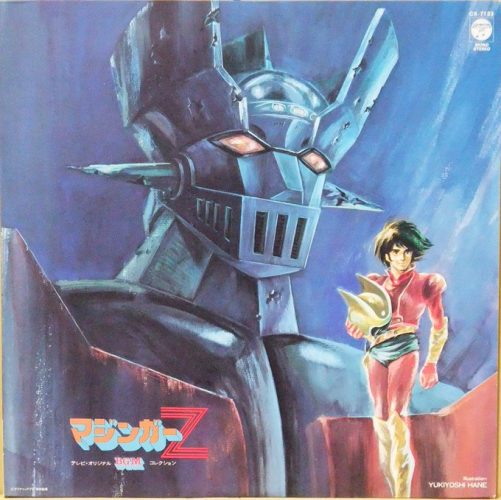
Our discussions on manga and anime have almost all centered around Japan or America, but our favorite fandom has reached all across the world, with otaku culture being prominent in plenty of other Western nations other (and at times, even more so) than the U.S.A. Italy, in particular, stands out for adopting our favorite media not only heartily, but surprisingly early as well. So let’s celebrate the 40th anniversary of manga and anime in Italy by taking a look back at its history and seeing how Italian otaku stand out.
The Origins
The story of manga and anime arriving in Italy is much the same as everywhere else. The end of the Tokugawa era brought Japan out of its long period of isolation and set a precedent for heavy cultural exchange with other nations that still continues to this day. However, anime still didn’t break through to Italy for years. The Mediterranean nation missed out on all the earliest breakout hit anime we know in America. That means no Tetsujin-28, no Mach Go Go Go and no Tetsuwan Atom.
It wasn’t just anime that was missing from Italian TV though, content was very sparse as a whole, having barely enough room to get regular domestic broadcasts on the air, let alone imported shows. Italian TV wouldn’t get its big break until 1976, which saw Italy’s national public broadcaster Rai undergo heavy reforms that would catch the country up to television standards held in most of the rest of the developed world. This included adding a second public broadcast channel meant to feature more creative and experimental content, a significant reduction in censorship, introducing color broadcasting and bringing private channels to Italy for the first time. Over 50 of these stations had already been established by the end of the year. The stage was now set for anime to make its grand introduction to the boot.
Mecha, Mecha, Mecha
If you've been doing your homework on anime trends from decades past, you'll know that the 70s were ruled by giant robots, so of course, the first anime drip-feeds into Italy were heavy on mecha. Around 1979, local airwaves were hit with one super robot classic after another, including Mazinger Z, Wakusei Robo Danguard Ace, UFO Robot Grendizer and many more. Manga for these classic characters was not far behind, and demand grew so large that Italian publishers even began producing their own original books and comics based on the most popular properties. These were printed on somewhat questionable legal grounds and the artists’ inexperience with drawing in the Japanese style was plainly apparent, but they illustrate how contagious mecha fever was around the country.
This wasn’t some passing trend either, as the fascination with giant robots is still prevalent among Italian otaku even today. Picture frame shops proudly display framed art of classic super robots, Fumetteria regularly stocks imported model kits and the famous Profondo Rosso store and museum dedicated to the work of Italian horror cinema master Dario Argento sells a bust of Steel Jeeg for some reason. It’s safe to say these stories made an impact just as big as the robots featured in them.
Diversity is the Spice of Life
Mecha were a cultural force to be reckoned with during the early days of anime and manga localization, but Italy soon found a new trend in the form of the shojo genre. Despite generally being considered less popular than their male-oriented counterparts in both Japan and North America, manga and anime aimed at young girls have played host to too many wonderful stories to count and Italian importers were quick to pick up on that, localizing many of the genre’s earliest hits such as Georgie, Tim Tim Circus, Lady Love, and Attacker You! nearly a decade before other Western countries began to consider manga and anime to be anything but male pass-times.
The downside was that many early translations of any manga published in Italy were often not the most respectful. They added their own coloring, edited certain panels, took frequent liberties with dialogue and even cut certain scenes completely. But that would change soon, as Italy was about to find a whole new appreciation for the medium.
The Second Invasion
Whether you’re from America, Japan or elsewhere, you probably know about the monolithic success of Akira and how it brought unprecedented respect to otakudom everywhere and this was no different for Italy. Following the manga’s localization in 1990, the medium began to lose its stigma of being just kids’ stuff and within a year, publishers like Glénat and Granata Press imported a deluge of mature otaku media with faithful translations and Italian printings of manga have remained accurate ever since. This propelled manga and anime even further into public consciousness, to the point that its influence is obvious in Italian drawing styles to this day. Even a cursory glance at popular Italian comics like W.i.t.c.h. and Monster Allergy or cartoons like Winx Club will make the stylistic inspiration plainly apparent.
While the Crunchyrolls and Funimations of America market their content to a small but dedicated subculture, Italian localizers have bridged the gap and made anime and manga notable parts of their cultural D.N.A. in their own right. Perhaps the licensees here could benefit from learning from the Italian market.
Final Thoughts

We hope you've enjoyed our brief tour of the history of Italian otakudom. Be sure to let us know what you liked or what else you thought we should have mentioned in the comments below and tell what other countries you would like us to spotlight as well.

